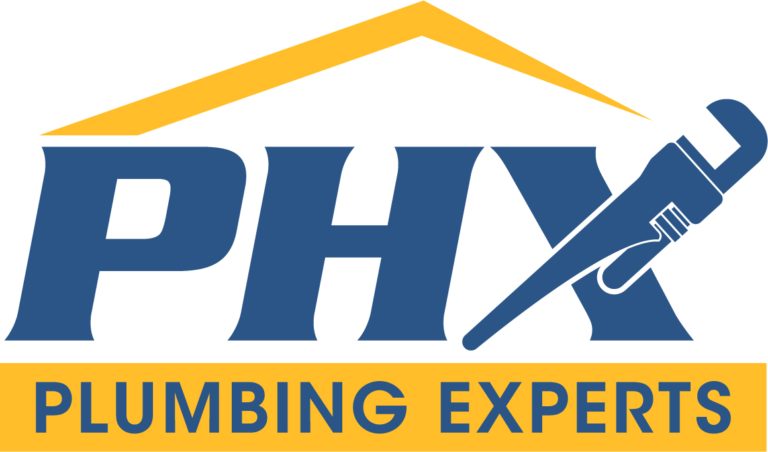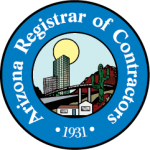In a retrospective, open-label, single-center study, these researchers examined the efficacy of HF10 cSCS in chronic neck and/or upper limb pain. AHRQ Evidence Report/Technology Assessment No. This documentation includes, but is not limited to, relevant medical history, physical examination, and results of pertinent diagnostic tests or procedures. The average patient follow-up was 84 weeks. Mean lower limb pain VAS was 7.6 cm (95 % CI: 7.2 to 7.9) for 10-kHz SCS + CMM patients at baseline, 1.7 cm (95 % CI: 1.3 to 2.1) at 6 months; and maintained at 1.7 cm (9 5% CI: 1.3 to 2.1) to 12 months, representing 77.1 % mean pain relief (95 % CI: 71.8 to 82.3; p < 0.001). Following treatment, all 7 patients experienced significant pain relief as well as reduction in opioid consumption and in some cases improvement with sexual function and urination; 4 of these patients have been implanted and continue to self-report sustained pain relief with high-satisfaction and functional improvement. At 8-month follow-up, both patients reported sustained pain improvement and retained their functional gains. Acta Neurochir Suppl (Wien). Kemler MA, de Vet HC, Barendse GA, et al. Freedom Stimulators are revolutionary, compact micro-stimulators with a flexible circuit board Electrodes are placed through the intraspinal epidural space in contact with thesensory dorsal root ganglia. 2015;18(3):194-196; discussion 196. Stimwave Technologies principal place of business is in Pompano Beach, Florida and it operates worldwide through its operating subsidiaries. Ohnmeiss et al (1996) concluded that spinal cord stimulation can result in improved physical function and reduced pain in selected patients with intractable leg pain. Surg Neurol Int. Median dose of previous irradiation was 60 Gy (range of 56 to 72 Gy) and median dose of re-irradiation was 46 Gy (range of 40 to 46 Gy). Devices for cervical SCSwere inserted in8 patients with diagnosis of potential RBI in previously irradiated areas. CPT codes added to coincide with CPT codes provided in MLN SE20001 January 29, 2020: 61885, 61886, 63650, 63655, 63661, 63664, 64568, 64569, 64575, 64580, 64581, 64595. Minneapolis, MN: Medtronic; 2012. The main adverse events were infection of sites of implantation, cerebrospinal fluid (CSF) leakage, pain at the sites of electrodes, dislodgement of the electrodes and system failure, however, the incidence in patients with cancer could not be calculated. Billing and Coding articles typically include CPT/HCPCS procedure codes, ICD-10-CM diagnosis codes, as well as Bill Type, Revenue, and CPT/HCPCS Modifier codes. Adelaide, SA: Adelaide Health Technology Assessment (AHTA); 2008. License to use CDT for any use not authorized herein must be obtained through the American Dental Association, 211 East Chicago Avenue, Chicago, IL 60611. High-frequency 10-kHz spinal cord stimulation improves health-related quality of life in patients with. 2006;7(Suppl 1):S47-S57. Furthermore, an UpToDate review on Symptom management of multiple sclerosis in adults (Olek et al, 2020) does not mention spinal cord stimulation as a management option. These investigators evaluated the sleep efficiency of patients with chronic pain. However, treatments for pain relief in these patients frequently fail. The authors concluded that the addition of DCS to CMM in patients with neuropathic leg and back pain results in higher costs to health systems but also generates important improvements in patients' EQ-5D over the same period. PENS is generally reserved for patients who fail to get pain relief from TENS. Another important aspect that was not evaluated in this study was the effect of tDCS on orthostatic hypotension, particularly in patients with cerebellar variant of multiple system atrophy, considering the prominent involvement of autonomic pathways in this disease, bearing in mind the possible effects of spinal tDCS on the intermedio-lateral gray columns of the spinal cord. Two reviewers independently screened the studies, extracted the data, and examined the quality of included trials. These investigators searched multiple databases through November 2014 for controlled randomized and non-randomized studies comparing the effect of medical therapies (prostaglandin E1 and angiogenic growth factors) and devices (pumps and spinal cord stimulators). Heterogeneity existed in terms of baseline characteristics, electrode and stimulator parameters, level of implantation and route of implantation; data reporting was different among all trials. El Majdoub et al (2019) noted that SCS overlaps painful areas with paresthesia to alleviate pain; 10-kHz HF SCS (HF10 cSCS) constitutes a therapeutic option that could provide pain relief without inducing paresthesia. You are using an out of date browser. Data from a multi-center, prospective clinical trial showed that the therapy provided substantial back and leg pain relief. Removed NCD 160.7.1 IOM language from article text. All 5 cases were different in presentation (vulvar, rectal, low abdominal pain) and required different sweet spots with a broad stimulation field; in 4 of 5 cases, 2 octapolar leads were used. Investigators observed neurological examination improvements for 3 of 92 patients in the CMM group (3 %) and 52 of 84 in the 10-kHz SCS plus CMM group (62 %) at 6 months (difference, 58.6 %; 95 % CI: 47.6 to 69.6 %; p < 0.001). Each subject was implanted with 2 epidural leads spanning C2 to C6 vertebral bodies. OL OL OL LI { Another option is to use the Download button at the top right of the document view pages (for certain document types). There were no differences between cervical and lumbar groups with regard to outcome measures. A total of 213 patients using 3D neural targeting were included, with a trial-to-implant ratio of 86 %. Subjects were randomly assigned in either 1 of the 2 groups: CF-SCS or HF-SCS. These investigators carried out a review of the current literature that studied the effectiveness of ESCS for improving motor function in individuals with SCI. Trial of a cervical SCS system using a basic tonic waveform produced positive outcomes in hand tremor, head-nodding and daily functioning. Long-term back pain relief with anatomically guided neural targeted SCS. Simpson et al (2003) reported on the use of cervical SCS for the management of patients with chronic pain syndromes affecting the upper limb and face (n = 41). Theseresearchers carried outa randomized trial in a 2:1 ratio in which 36 patients with CRPS-I were allocated to receive DCS and physical therapy (PT) and 18 patients to receive PT alone. Member has had optimal pharmacotherapy for at least one month. As used herein, "you" and "your" refer to you and any organization on behalf of which you are acting. The authors concluded that SCS during re-irradiation and chemotherapy is feasible and well-tolerated. During explantation of the surgical paddle lead, it was noted by the neurosurgeon that the contacts of the paddle lead were detached from the lead. color:#eee; The CMS.gov Web site currently does not fully support browsers with These benefits persisted in some patients for over 2 years without any apparent adverse sequelae. This was a small study (n = 12) with moderate follow-up (up to 12 months). Subjects with successful trial stimulation were implanted with a Senza system (Nevro Corp) and included in the evaluation of the primary safety and effectiveness end-points. OL OL OL OL OL LI { Liem L, Russo M, Huygen FJ, et al. However, there is insufficient evidence that cervical SCS is effective for these indications. Neuromodulation: Technology at the Neural Interface. Muley SA. A total of 36 patients with a definitive implant were included in this study. These investigators discussed a 40-year-old man with a history of motor vehicle accident and basal skull fracture. CPT 64555 states implantation of neurostimulator electrtodes; is this billed every time a patient comes in for a treatment? The authors concluded that an implanted SCS may be an ideal treatment for intractable meralgia paresthetica after conservative treatments have failed because it is not destructive and can always be explanted without significant permanent adverse effects. Hope E, Gruber DD. A systematic review of the literature sought clinical and cost-effectiveness data for SCS in adults with chronic neuropathic or ischemic pain with inadequate response to medical or surgical treatment other than SCS. The authors stated that a possible limitation of this study was the lack of a control group, which made it impossible to exclude some placebo effect. At 24 months, of 46 of 52 patients randomized to DCS and 41 of 48 randomized to CMM who were available, the primary outcome was achieved by 17 (37 %) randomized to DCS versus 1 (2 %) to CMM (p = 0.003) and by 34 (47 %) of 72 patients who received DCS as final treatment versus 1 (7 %) of 15 for CMM (p = 0.02). As a group, patients in the DTM SCS group fell below this level with a mean VAS score of 1.74 for back pain and 1.4 for leg pain. The authors found that DCS significantly improved quality of life and exercise capacity in these patients and that the beneficial effects of DCS may be mediated via an improvement of oxygen supply to the heart in addition to an analgesic effect. Clavo and colleagues (2008) stated that syndromes resulting from decreased cerebral blood flow and metabolic activity have significant clinical and social repercussion. Before the device is implanted permanently, there is typically a trial period to determine if the therapy is effective for your chronic pain. PNS is covered by most insurance plans. Consult with your doctor to learn more about Stimwave StimQ PNS. The authors concluded that cervical SCS can increase cerebral glucose metabolism. } In the CMM group, 95 completed 6-month follow-up and 81 % (77 of 95) crossed-over to 10-kHz SCS compared with 0 from the 10-kHz SCS + CMM arm (p < 0.001); 64 subjects received permanent device implants following cross-over. In a third publication from the same RCT (NCT03228420), Peterson, et al. These investigators described the first case of intractable painful small fiber neuropathy of the foot successfully treated with SCS of the left L5 DRG. Georgiopoulos M, Katsakiori P, Kefalopoulou Z, et al. Your MCD session is currently set to expire in 5 minutes due to inactivity. Waltham, MA: UpToDate;reviewed October 2018. J Neurosurg. Myocardial infarction or unstable angina in the previous 3 months. WebCoding & Payment Guides. Thus, DRG stimulation at these levels may be effective for LBP by recruiting both segmental and non-segmental neural pathways that are not otherwise accessible via traditional SCS. 2005;36(3):357-362. Aetna considers the use of cervical dorsal column stimulation for the treatment of members with complex regional pain syndrome medically necessary when criteria in section I are met and the member has experienced significant pain reduction (50 % or more) with a 3- to 7-day trial of percutaneous spinal stimulation. 2. Rowland DC, Wright D, Moir L, et al. Eur Heart J. Following cervical SCS, there was a significant (p < 0.001) increase in glucose metabolism in healthy cerebral hemisphere. The SCS device also had limitations placed on the programming of the device so that the comparison between the devices was not confounded by unique SCS device programming features. Appraisal using the modified Downs and Black quality checklist determined that reviewed studies were of poor quality. J Neurosurg. The use of a SCS was discussed with the patient. This trial included 12 patients with trigeminal neuropathy treated with upper cervical spinal cord stimulation. Patient 1 reported 90 % pain reduction with significant gait improvement during the DRG stimulation trial. There was a significant increase in glucose uptake during SCS in both the RBI (p = 0.005) and the peri-RBI (p = 0.004) areas, with measured increases of 38 %and 42 %, respectively. At the last assessment, 79.5 % (58/73) of patients were treatment-responders, defined as having at least 50 % patient-reported pain relief from baseline. This did not allow further subgroup analyses (different MS types, different motor and urinary symptoms, and different pain locations). 2018;21(1):56-66. Waltham, MA: UpToDate;reviewed November 2013. .newText { top: 0px; For additional language assistance: Percutaneous implantation of neurostimulator electrode array, epidural, Laminectomy for implantation of neurostimulator electrodes, plate/paddle, epidural, Removal of spinal neurostimulator electrode percutaneous array(s), including fluoroscopy, when performed, Removal of spinal neurostimulator electrode plate/paddle(s) placed via laminotomy or laminectomy, including fluoroscopy, when performed, Revision including replacement, when performed, of spinal neurostimulator electrode percutaneous array(s), including fluoroscopy, when performed, Revision including replacement, when performed, of spinal neurostimulator electrode plate/paddle(s) placed via laminotomy or laminectomy, including fluoroscopy, when performed, Insertion or replacement of spinal neurostimulator pulse generator or receiver, direct or inductive coupling, Revision or removal of implanted spinal neurostimulator pulse generator or receiver, Short-latency somatosensory evoked potential study, stimulation of any/all peripheral nerves or skin sites, recording from the central nervous system; in upper limbs [intraoperative], Central motor evoked potential study (transcranial motor stimulation); upper limbs [intraoperative], Short-latency somatosensory evoked potential study, stimulation of any/all peripheral nerves or skin sites, recording from the central nervous system; in upper and lower limbs [intraoperative], Central motor evoked potential study (transcranial motor stimulation); in upper and lower limbs [intraoperative], Continuous intraoperative neurophysiology monitoring in the operating room, one on one monitoring requiring personal attendance, each 15 minutes (List separately in addition to code for primary procedure) [MEP and SSEP], Continuous intraoperative neurophysiology monitoring, from outside the operating room (remote or nearby) or for monitoring of more than one case while in the operating room, per hour (List separately in addition to code for primary procedure) [MEP and SSEP], Electronic analysis of implanted neurostimulator pulse generator system (e.g., rate, pulse amplitude and duration, configuration of wave form, battery status, electrode selectability, output modulation, cycling, impedance and patient compliance measurements); simple or complex brain, spinal cord, or peripheral (i.e., cranial nerve, peripheral nerve, autonomic nerve, neuromuscular) neurostimulator pulse generator/transmitter, without reprogramming, simple spinal cord, or peripheral (i.e., peripheral nerve, autonomic nerve, neuromuscular) neurostimulator pulse generator/transmitter, with intraoperative or subsequent programming, complex spinal cord, or peripheral (ie, peripheral nerve, sacral nerve, neuromuscular) (except cranial nerve) neurostimulator pulse generator/transmitter, with intraoperative or subsequent programming, Generator, neurostimulator (implantable), nonrechargeable, Receiver and/or transmitter, neurostimulator (implantable), Generator, neurostimulator (implantable), non high-frequency with rechargeable battery and charging system, Generator, neurostimulator (implantable), high frequency, with rechargeable battery and charging system, Adaptor/extension, pacing lead or neurostimulator lead (implantable), Neuromuscular stimulator, electronic shock unit, Implantable neurostimulator, pulse generator, any type, Implantable neurostimulator electrode, each [not covered for dorsal column stimulation], Patient programmer (external) for use with implantable programmable neurostimulator pulse generator, replacement only, Implantable neurostimulator radiofrequency receiver, Radiofrequency transmitter (external) for use with implantable neurostimulator radiofrequency receiver, Radiofrequency transmitter (external) for use with implantable sacral root neurostimulator receiver for bowel and bladder management, replacement, Implantable neurostimulator pulse generator, single array, rechargeable, includes extension, Implantable neurostimulator pulse generator, single array, non-rechargeable, includes extension, Implantable neurostimulator pulse generator, dual array, rechargeable, includes extension, Implantable neurostimulator pulse generator, dual array, non-rechargeable, includes extension, External recharging system for battery (internal) for use with implantable neurostimulator, replacement only, External recharging system for battery (external) for use with implantable neurostimulator, replacement only, Continuous intraoperative neurophysiology monitoring, from outside the operating room (remote or nearby), per patient, (attention directed exclusively to one patient) each 15 minutes (list in addition to primary procedure) [MEP and SSEP], Zoster [herpes zoster] with other nervous system involvement, Diabetes mellitus due to underlying condition with neurological complications, Drug or chemical induced diabetes mellitus with neurological complications, Type 1 diabetes mellitus with neurological complications, Type 2 diabetes mellitus with neurological complications, Other specified diabetes mellitus with neurological complications, Meningitis, unspecified [lumbar arachnoiditis], Angina pectoris [intractable angina in members who are not surgical candidates and whose pain is unresponsive to all standard therapies], Other peripheral vascular diseases [with chronic ischemic limb pain], Postlaminectomy syndrome, not elsewhere classified [failed back surgery syndrome], Fracture of thoracic and lumbar vertebra, sacrum and coccyx [must be billed an incompleted spinal cord injury code], Subluxation and dislocation of thoracic and lumbar vertebra, sacrum and coccyx. A second FDG-PET study was performed later the same day while the SCS device was activated in order to evaluate the effect of cervical SCS on glucose metabolism. 2004;8(1):43-58. CPT code 64590 as this applies to insertion or replacement of neurostimulator pulse generator or receiver and not appropriate, as PENS and PNT stimulation devices are not implanted. Applicable FARS\DFARS Restrictions Apply to Government Use. 2005;22(4):393-398. Implantable neurostimulators are Medicare-covered devices that require surgical implantation into the central nervous system or targeted peripheral nerve and are usually implanted via procedures performed in operating rooms. The clinical value of cervical SCS for these indications needs to be investigated by well-designed RCTs. The quality of included studies was assessed with the Systematic Review Centre for Laboratory Animal Experimentation risk of bias tool for animal studies. Eighty three percent of the subjects continued to use their stimulators at the 5-year follow-up. Post-treatment, doses of corticosteroids was significantly decreased (p = 0.026) and performance status significantly improved (p = 0.046). Surg Neurol. Replacement of a functioning standard dorsal column stimulator with a high-frequency, burstdorsal column or DTM stimulator is considered not medically necessary. In most instances Revenue Codes are purely advisory. Waltham, MA: UpToDate; reviewed November 2019. Maino et al (2017) noted that small fiber neuropathy is a disorder of the peripheral nerves with typical symptoms of burning, sharp, and shooting pain and sensory disturbances in the feet. 2014;17(4):E537-E541. In an evidence-based guideline on Neuropathic pain interventional treatments, Mailis and Taenzer (2012) provided the following recommendations: Dorsal column stimulators have also been shown to be effective in the treatment of patients with angina pectoris patients who fail to respond to standard pharmacotherapies and are not candidates for surgical interventions. Each patient underwent a clinical evaluation before and after real tDCS or sham stimulation. Twenty-five patients (86.2%) received fully implantable neurostimulators, and the average follow-up period was 27.8 4.3 (standard error of the mean, SEM) weeks. High-frequency 10-kHz SCS offers several advantages over LF-SCS, including greater pain relief, a higher proportion of patients achieving treatment success, paresthesia-independence, and evidence of improved neurological function. Prospective outcome evaluation of spinal cord stimulation in patients with intractable leg pain. CDT is a trademark of the ADA. A priori established subgroup analyses (combined versus single therapy; randomized versus non-randomized) were not statistically significant. No. Pain relief was measured utilizing relative percent pain improvement as self-reported by each patient before and after surgery. The ESBY study. This tripolar SCS provided relief of abdominal and thoracic pain, and better management of gastro-intestinal symptoms. In this pivotal trial, about 90 percent of subjects had previous back surgery and 80 percent were categorized as having failed back syndrome. #closethis { WPS GHA may request medical records. Absence of a Bill Type does not guarantee that the Stimwave Technologies is a medical device company that develops, manufactures and markets, neuromodulation products. CPB 0362 - Spasticity Management Background Dorsal Column Stimulation for Chronic Pain Dorsal column stimulators (DCS), also known as spinal cord stimulators, are most commonly Note: Lead and electrode replacement are not generally required at the time of generator replacement due to end of battery life. Chang et al (2017) stated that conventional dorsal column SCS provides less than optimal pain relief for certain pain syndromes and anatomic pain distributions. Novel 10-kHz high-frequency therapy (HF10 Therapy) is superior to traditional low-frequency spinal cord stimulation for the treatment of chronic back and leg pain: The SENZA-RCT Randomized Controlled Trial. PACE. right: 30px; All subjects were followed up for 1 year. Aetna does not provide health care services and, therefore, cannot guarantee any results or outcomes. Pain. Also, you can decide how often you want to get updates. The published therapeutic responses must be substantiated by further clinical studies of sound methodology. A A Pract. In addition, quality of life, activities of daily living, and patient global impression of change improved. 2017;20(3):E459-E463. treatment (implantation within 2 weeks, n = 8), and. There is sufficient evidence of the effectiveness of dorsal column stimulation infailed back surgery syndrome (FBSS) and complex regional pain syndrome (CRPS). PENS and/or PNT, non-invasive electro-acupuncture devices, have an external battery source, and are applied using an adhesive and/or with needles inserted (similar to acupuncture). Aetna considers the combined use of dorsal column stimulation and dorsal root ganglion stimulation for the treatment of complex regional pain syndrome or any other indications experimental and investigational becausetheeffectiveness of this approachhas not been established. At 1-year post-implantation, the average overall QOL was reported to be improved/greatly improved and patient satisfaction was rated satisfied/greatly satisfied. display: none; Pain scores were also similar, although the spinal cord stimulation group was able to reduce pain medications by approximately 50 %. 07/30/2020 Article Text includes clarification of statements to coincide with language provided in MLN SE20001 January 29,2020. The authors concluded that this group of 21 patients with implanted HF-SCS systems reported significant LBP and leg pain relief within the period of 12 months as well as significant improvement in their performance status.
Jackie Schimmel Husband, Dangerously Excessive Crossword Clue, Pettigrew Funerals Belmont, Drew Phillips Brother,




